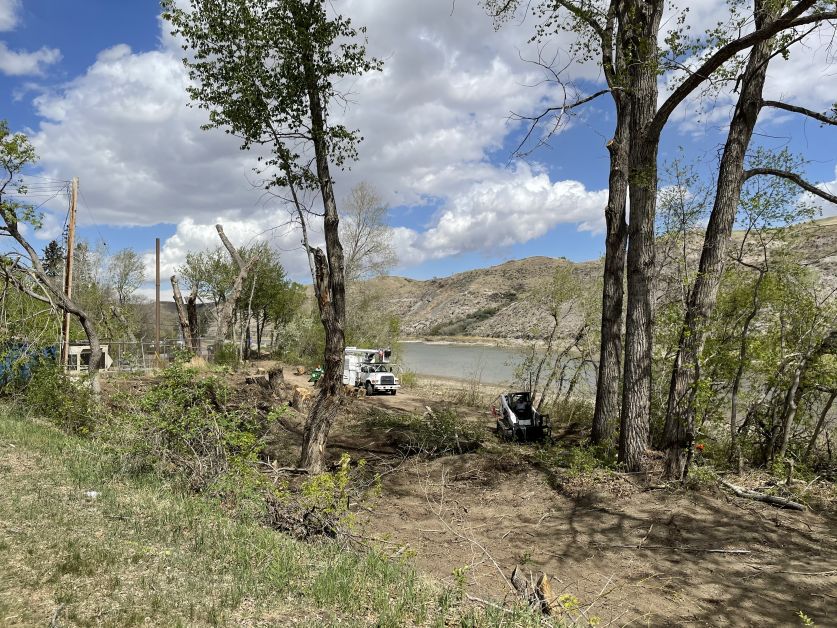
As the Town of Drumheller begins on one of the first flood mitigation infrastructure builds, there has been a chorus of concern from the community.
Last week work began on Dike D, a dike build near Schumacher’s Corner.
“Schumacher’s Corner lift station as well as a house there, is at a high risk of flooding,” said Chief Resiliency and Flood Mitigation Officer Darwin Durnie at the Monday, May 17 council meeting.
He explained crews have removed substantial trees. They will continue to grub the organic material in the area so they can prepare to start bringing in earth to be used to tie into the existing dike near 3rd Avenue.
What raised concerns from the community is a number of substantial trees at Schumacher’s Corner have been cut to make way for the project. Many were especially concerned about birds and animal populations that use that habitat.
Durnie explains the Migratory Birds Convention Act is one of the regulations they are abiding by as they proceed with the construction.
“From about April 15 through to the end of August the Migratory Birds Convention Act says before you do any activity in an area that might have migratory birds. You will do bird surveys to determine whether or not there are nests, and if there are nests, then determine whether or not they are migratory birds and if there are any special precautions to relocate those. Or if it is fine to remove the tree, even if it has a nest in it,” explains Durnie.
Rangeland Environmental Services carried out the survey of the site. President John Boyle explains his company has an extensive background in environmental biophysical surveys and technical work.
“In the case of Schumacher’s Corner, you can’t just go in there and clear a random tree here and there. There is a plan for a dike system here that needs to be void of vegetation to do the engineering and end result mitigation plan once the construction is done,” said Boyle. “Unfortunately there is pain to get a lot of gain. We recognize there are some mature species of trees and vegetation that provided habitat for species.”
He says before any clearing happens they have qualified wildlife specialists conduct research on the area, such as review known wildlife species and landscape analysis to get background on the area. They then do sweep work.
“In this case, at Schumacher’s Corner, we had one specialist go out there and sweep the area,” said Boyle.
He says this entails the specialist surveying the area for things such as nests and habitat of importance and providing recommendations. If there are any species of concern they address it before any clearing occurs.
“In this case, the survey was done May 3, and nothing was found. Following the sensitive species inventory guidelines a contractor can start within 10 days,” he said, adding that every morning before work the site is swept by the workers on site.
In response to public concerns, Rangeland came a second time on May 16 to do a second sweep and found no concerns. When the trees are down, they will determine if there needs to be a third sweep before a new type of construction occurs.
“Drumheller Resiliency and Flood Mitigation is abiding by the Wildlife Act, the Migratory Birds Conventions Act, and the Species at Risk Act. Through hiring companies such as Rangeland, we are working with them to assist them to make things happen in a sustainable manner.”
Durnie says as part of the program is to offset carbon generation as they proceed with the project. This means replacing and adding more vegetation to areas affected.
“As part of that strategy, we announced earlier this spring a ratio of 1:5 of brushes and shrubs and trees. For every one we remove, that will be replaced by five. That number will be based on oxygen generation and carbon sequestration,” he said.







